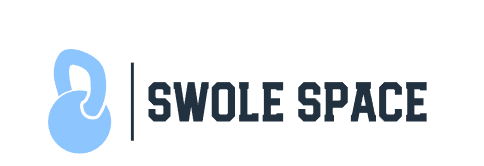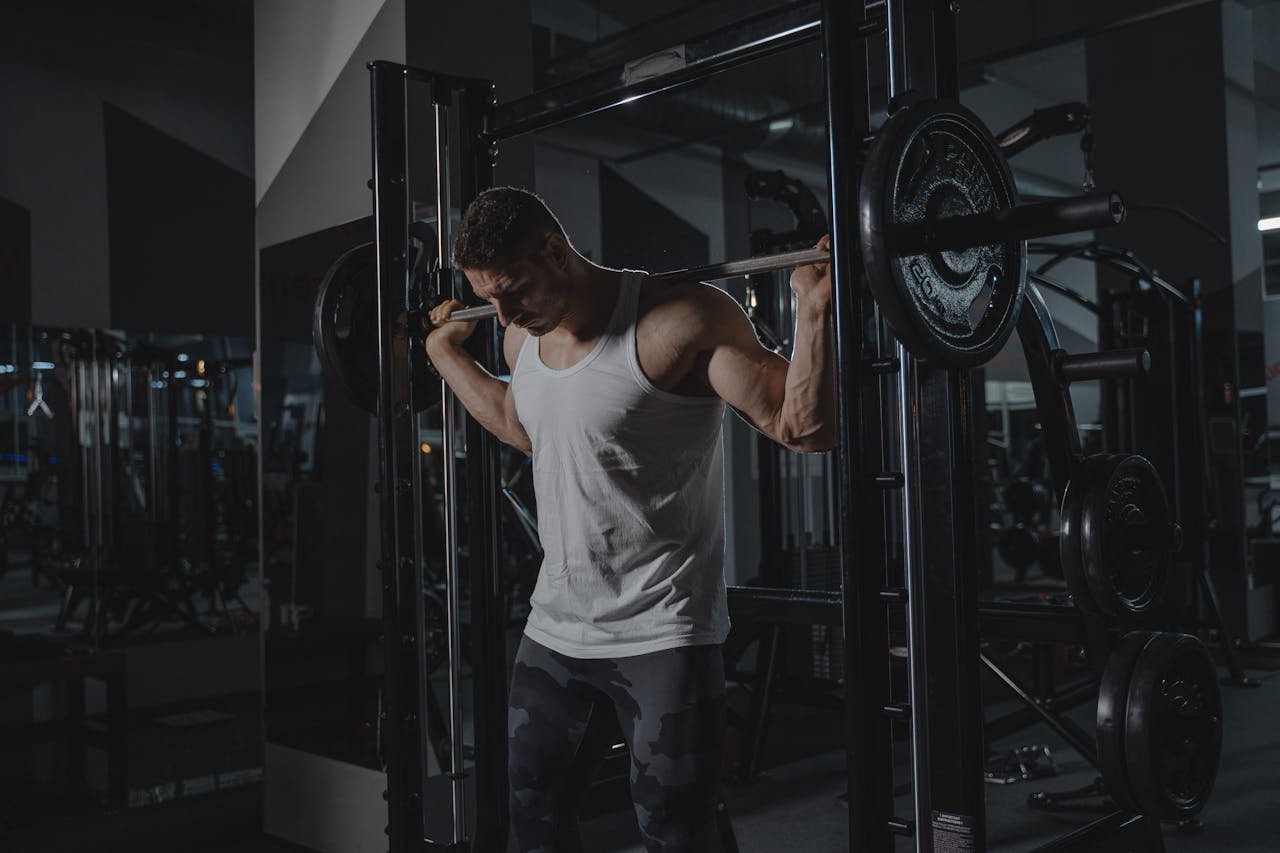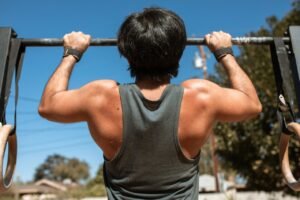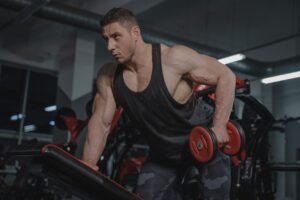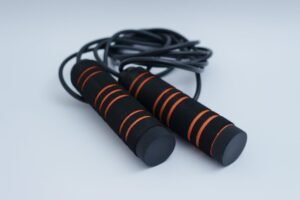Strength training isn’t just about lifting weights—it’s about choosing the right exercises for your goals. When people first get into fitness, they quickly hear about two categories: compound vs isolation exercises. Both can help build muscle, improve strength, and support overall fitness, but they work in different ways.
For anyone training at home, knowing how to balance the two can make workouts more effective, time-efficient, and even more enjoyable. Let’s break down what each type of exercise is, their benefits, and how you can combine them into a well-rounded program.
Disclosure: We may earn a commission from links mentioned in this post, at no extra cost to you. We only recommend products we trust
What Are Compound Exercises?
Compound movements are exercises that involve more than one joint and multiple muscle groups at the same time. These are the “big lifts” that often come up in strength training: squats, deadlifts, bench presses, push-ups, and pull-ups.
Because they require several muscles to work together, compound movements are highly functional—they mimic real-life activities like standing up, picking something off the ground, or pushing a heavy object.
For home fitness, classic compound exercises include:
- Squats (bodyweight, dumbbell, or barbell)
- Push-ups or bench press
- Deadlifts with dumbbells or kettlebells
- Rows (dumbbells, resistance bands, or pull-up variations)
What Are Isolation Exercises?
Isolation movements, on the other hand, target a single muscle group and involve only one joint. These are exercises like bicep curls, triceps extensions, leg extensions, or calf raises. The goal is to put the maximum load on one specific muscle, which can be helpful for building definition, correcting imbalances, or rehabbing injuries.
At home, some easy isolation movements are:
- Bicep curls with dumbbells or resistance bands
- Lateral raises for shoulders
- Tricep kickbacks
- Calf raises (bodyweight or weighted)
While isolation exercises don’t provide the same full-body benefits as compound lifts, they play an important supporting role in a balanced program.
Muscle Growth and Hypertrophy
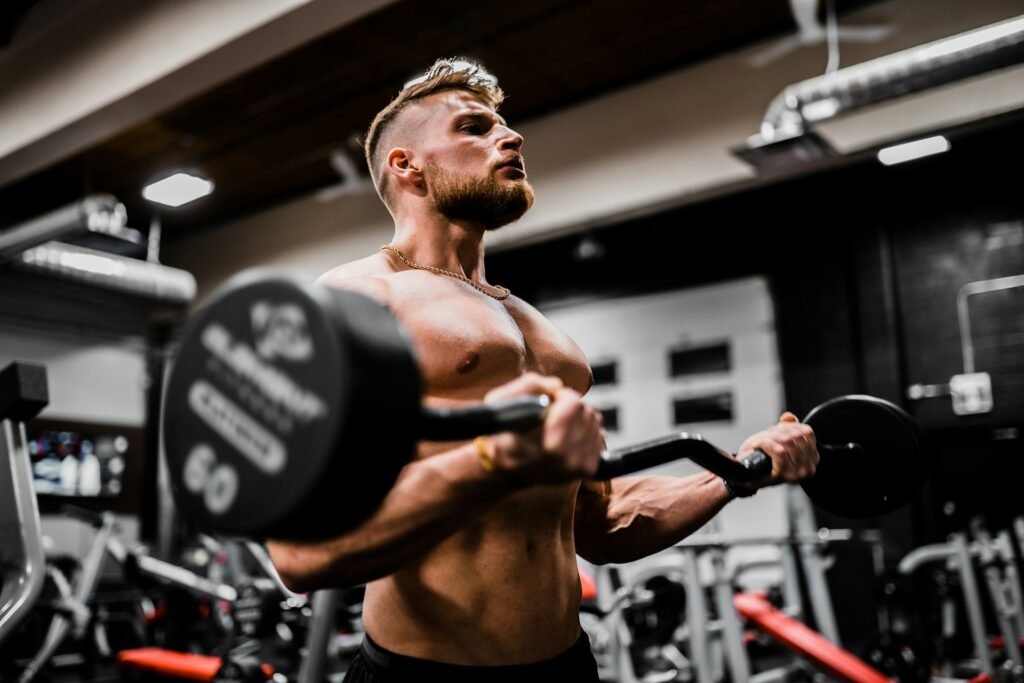
The big question many people have is: which type of exercise builds more muscle?
Research shows that both compound and isolation movements can lead to hypertrophy. Compound lifts allow you to lift heavier weights, which creates more overall tension and growth stimulus across multiple muscle groups. However, because other muscles sometimes give out first, the primary target may not always be fully exhausted.
For example, during a deadlift, your grip or lower back might fatigue before your hamstrings and glutes reach failure. This is where isolation work, like leg curls or hip thrusts, can step in to provide extra stimulus.
On the other hand, isolation exercises guarantee that the muscle you want to grow is the one doing all the work. That’s why bodybuilders often include both.
Efficiency and Time Management
One of the biggest benefits of compound movements is efficiency. A set of squats works your quads, glutes, hamstrings, and core, while a bench press targets chest, shoulders, and triceps in one go. For anyone with limited time—or limited space and equipment at home—this means you can get more results in less time.
Isolation exercises, while important, are less time-efficient. If you only did isolation work, you’d need to perform a long list of exercises to hit every muscle group. That’s why most people build their routines around compound lifts and then sprinkle in isolation movements for balance.
Range of Motion and Muscle Activation
Both exercise types can train muscles through different ranges of motion, and sometimes the “smaller” exercise actually provides more stretch.
For example:
- A squat trains the quads through a large range, but a leg extension can isolate and stretch them even further.
- A bench press is a classic chest builder, but dumbbell flyes may stretch the chest more at the bottom of the movement.
Compound vs isolation exercises: Equipment Mentioned
To perform the exercises highlighted above and maximize muscle activation through full range of motion, you’ll need:
- Dumbbells – Used for exercises like dumbbell flyes and presses to target the chest and other muscle groups.
- Adjustable Weight Bench – Provides support and stability for presses, flyes, and other upper-body movements.
This shows why combining both types of exercises creates a more complete stimulus for growth.
Fatigue and Recovery
Another key difference is fatigue. Compound lifts are more demanding—they use more muscles, require heavier loads, and can tax your nervous system. That’s why you feel more drained after heavy squats than after a few sets of bicep curls.
Isolation exercises, in contrast, are less tiring and easier to recover from. This makes them useful when you want to add volume to a program without burning yourself out.
For home fitness enthusiasts, finding the right balance between compound and isolation exercises is essential. Training three to four days a week at home shouldn’t leave you completely exhausted from compound lifts alone. A strategic mix helps maintain consistency and recovery. Equally important is structuring your sets and reps effectively to maximize muscle growth.”
Injury Prevention and Rehabilitation

Isolation exercises shine when it comes to rehab and correcting imbalances. If one side of your body is weaker, or if a certain muscle doesn’t activate well after an injury, targeted isolation work can bring it back up to speed.
For example:
- Hamstring curls can help restore balance if your quads dominate.
- Rear delt raises can improve posture and reduce shoulder strain.
- Calf raises can strengthen often-neglected muscles that support ankle stability.
This is also where home equipment like resistance bands and adjustable dumbbells come in handy—you can isolate muscles without needing bulky gym machines.
Practical Recommendations
So, how should you structure your training? For most people:
- Combining compound and isolation movements efficiently often works best within a structured split, similar to a 5 days split workout for home fitness
- Base your program on compound lifts. These should make up the majority of your sets because they give the most “bang for your buck.”
- Use isolation lifts to fill the gaps. Add exercises that target weak points, smaller muscles, or areas you want to grow faster.
- Balance intensity with recovery. Heavy compound lifts should be balanced with lighter, more controlled isolation work to avoid burnout.
Here’s an example of how a home workout could look:
- Dumbbell squats (compound)
- Push-ups or bench press (compound)
- One-arm rows with resistance bands (compound)
- Bicep curls (isolation)
- Lateral raises (isolation)
This way, you hit multiple muscle groups efficiently, then finish by targeting specific areas.
Gear Suggestions
To make the most of your home workouts, here are some versatile pieces of equipment worth considering:
- Adjustable Dumbbells – Replace an entire rack of weights with one set.
- Resistance Bands – Great for rows, curls, extensions, and adding resistance to squats or push-ups.
- Foldable Weight Bench – Expands your exercise options for presses, flyes, and seated curls.
- Workout Mat – For comfort and support during bodyweight and isolation exercises.
Conclusion
When it comes to building muscle and strength, there’s no clear “winner” in the debate. Both compound and isolation exercises have unique benefits. Compound movements give you efficiency, strength, and functionality, while isolation lifts let you target muscles more precisely and correct imbalances.
For the best results—especially in a home fitness setting—the smartest approach is to combine the two. Build your foundation with compound exercises, then use isolation work strategically to refine, balance, and grow.

